Kerala cuisine, emerging from the lush embrace of the southwestern coast of India, is a culinary masterpiece, each dish a brushstroke on a canvas painted with flavors. With coconut, spices, and seafood as its palette, the cuisine is a symphony of unique tastes. Appam and stew, a breakfast melody, unites soft fermented rice pancakes with fragrant vegetable or meat stews. Fish curry with tapioca mirrors the coastal influence, blending tanginess and spice in perfect harmony. Sadya, a traditional feast, unfolds a banquet of vegetarian delights on a banana leaf canvas. Kerala cuisine, a fusion of aromatic spices and fresh coastal ingredients, beckons for a unique and enriching culinary journey.
Vada
-1702597440.jpg)
Vada is a popular and delicious dish in Kerala cuisine, originating from the southern region of India. It is a savory fried snack made from a batter of lentils or pulses, typically urad dal or black gram. The preparation of vada involves soaking the dal for a few hours and then grinding it into a smooth paste. The batter is then seasoned with spices such as cumin seeds, ginger, green chilies, and curry leaves to enhance its flavor. The shaped vada is deep-fried until it turns golden brown and crispy on the outside while remaining soft and fluffy on the inside. It is served hot and often enjoyed as a breakfast item or as a tea-time snack. Vada can be served on its own or paired with coconut chutney, sambar (a lentil-based soup), or a tangy tomato chutney for an extra burst of flavor. Kerala-style vada is known for its unique taste, as it is slightly spicier compared to vadas from other regions. The combination of the crispy texture and the aromatic blend of spices makes it a delightful treat for the taste buds. Whether enjoyed as a standalone snack or as part of a meal, vada is a favorite among locals and tourists alike, showcasing the rich and diverse flavors of Kerala cuisine.
Dosa
-1707383410.jpg)
Dosa is a popular and versatile dish in Kerala cuisine, known for its thin and crispy texture. It is a savory pancake made from a fermented batter consisting of ground black gram (urad dal) and rice. To prepare dosa, a mixture of soaked rice and black gram is finely ground and left to ferment overnight. Some recipes may include soaked fenugreek seeds in the batter to enhance flavor. After fermentation, water is added to the batter to achieve the desired consistency. The batter is then spread on a hot griddle or tava greased with oil or ghee. Dosas are typically served hot, folded in half or rolled like a wrap. They are often accompanied by various side dishes such as chutney (coconut, tomato, or mint) and sambar (a lentil-based vegetable stew). Dosas can also be enjoyed with fillings like spiced potato masala, paneer, or cheese, offering a wide range of delicious variations. This versatile dish is a popular choice for breakfast, lunch, or dinner in South Indian cuisine.
Idli
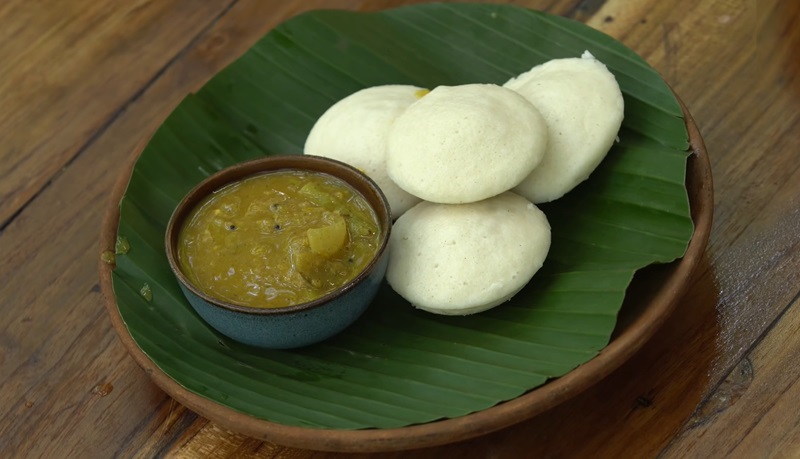
Idli is a popular South Indian dish that originates from the state of Kerala. It is a type of steamed rice cake that is light and fluffy in texture. Idli is made by grinding soaked rice and lentils together to form a batter, which is then fermented overnight. The fermented batter is poured into special moulds and steamed until cooked. Idli is typically served with a variety of accompaniments, such as coconut chutney and sambar. Coconut chutney is made by grinding fresh coconut with green chilies, ginger, and other spices, while sambar is a lentil-based vegetable stew. These accompaniments add a burst of flavors to the mild and slightly tangy taste of the idli. Idli is not only delicious but also highly nutritious. It is a good source of carbohydrates, proteins, and vitamins. The fermentation process enhances the nutritional value of idli by increasing the bioavailability of nutrients. It is also a light and easily digestible dish, making it a popular choice for breakfast or as a snack. Overall, idli is a staple in Kerala cuisine, enjoyed by people of all ages. Its simplicity, versatility, and health benefits make it a favorite dish not only in Kerala but across the country.
Puttu
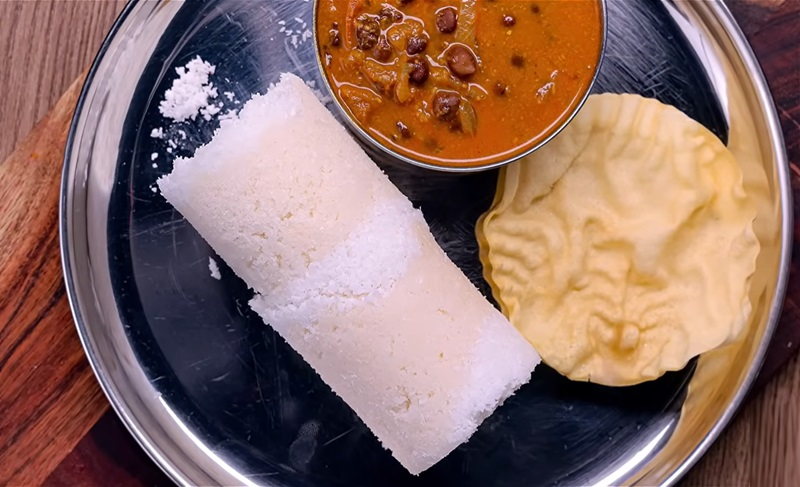
Puttu is a traditional breakfast dish made with rice flour, coconut, and water, steamed in cylindrical bamboo or metal vessels called puttu kutti. The preparation of Puttu involves layering the rice flour and grated coconut in the puttu kutti, resulting in a unique cylindrical shape. The steam from boiling water cooks the mixture to perfection, creating a soft and fluffy texture. The combination of the subtle sweetness of coconut and the mild taste of rice flour makes Puttu a delightful and comforting dish. Puttu can be enjoyed in various ways, such as with spicy curries, fish curry, or even with banana or plantain. It is not only filling but also nutritious, as it is gluten-free and low in fat. The versatility of Puttu makes it suitable for any time of the day, making it a favorite among Keralites and visitors alike.
Idiyappam
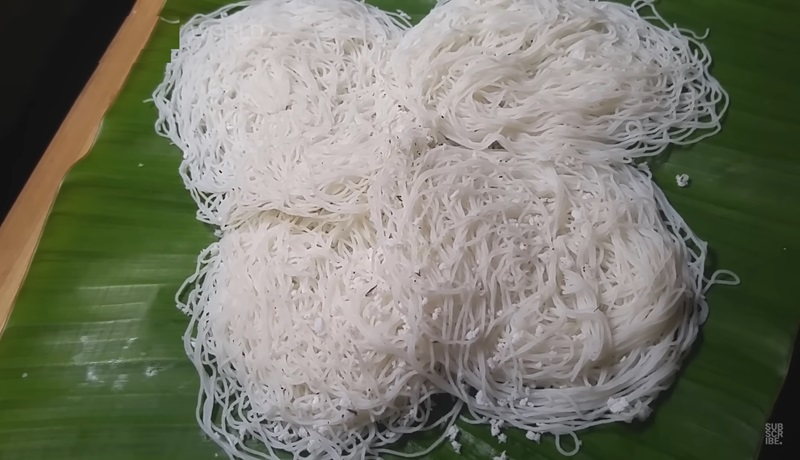
Idiyappam, also known as string hoppers, It is a traditional breakfast item made from rice flour, water, and a pinch of salt. The dough is made by mixing these ingredients together and then shaping it into thin, noodle-like strands. The idiyappam strands are then steamed in a special steamer called an idiyappam maker. Once cooked, they are served hot with a variety of accompaniments. The most common accompaniments include coconut milk and sugar. It is also served with rasam (a soup-like dish) or spicy curries. Idiyappam is loved for its light and fluffy texture, which is complemented by the rich flavors of the accompanying dishes. The soft strands of idiyappam absorb the flavors of the curry or chutney, creating a delightful combination of taste and texture.
Appam
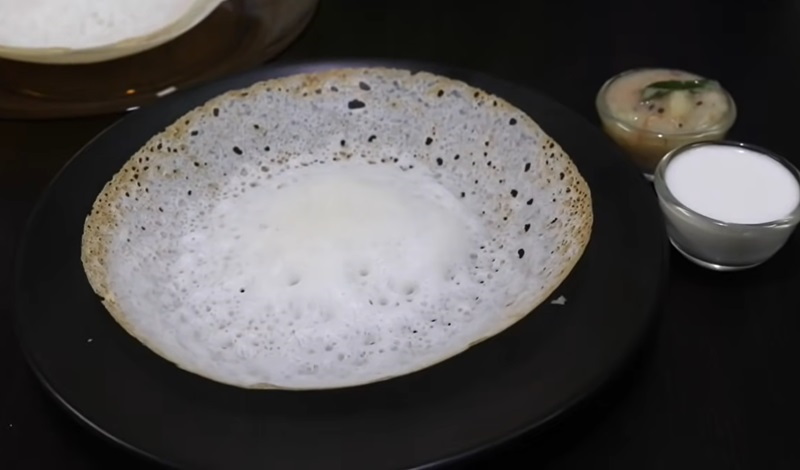
Appam holds a cherished place in Kerala's culinary landscape. This tender pancake, characterized by its unique round shape, is a delightful creation from fermented rice batter and coconut milk. Enjoyed during breakfast or dinner, appam complements coconut milk-based curries like vegetable stew or chicken curry. The preparation involves soaking rice, finely grinding it with grated coconut, and allowing the batter to ferment overnight, imparting a tangy flavor. Cooked in a round-bottomed appachatti pan, the batter swirls to create a thin, crispy edge and a soft center. The golden-brown appam, with its perfect balance of flavors and textures, epitomizes Kerala's culinary artistry. Its versatility in pairing seamlessly with various curries cements appam as a culinary gem in Kerala's vibrant cuisine. Exploring the essence of Kerala through appam is an invitation to a delightful culinary journey.
Sambar
-1707392000.jpg)
Sambar is a popular South Indian dish that originates from the state of Kerala. It is a savory and tangy lentil soup made with a variety of vegetables and flavored with a blend of spices. The key ingredients in Sambar are toor dal (pigeon pea lentils), tamarind pulp, and a unique spice mix called Sambar powder. To prepare Sambar, the toor dal is cooked until soft and then mashed to create a smooth consistency. A medley of vegetables like pumpkin, drumstick, brinjal, and carrot are added to the dal along with the tamarind pulp. The Sambar powder, made of roasted spices like coriander seeds, cumin seeds, fenugreek seeds, and curry leaves, is then added to enhance the flavor. The dish is simmered until the vegetables are tender and the flavors are well blended. The final touch is a tempering of mustard seeds, curry leaves, and dried red chilies in ghee or coconut oil, which is poured over the Sambar just before serving. Sambar is usually enjoyed with steamed rice or idli (rice cakes) and dosa (rice and lentil crepes). It is a wholesome and nutritious dish that offers a delightful combination of textures and flavors, making it a favorite among the people of Kerala.
Ada
-1707392409.jpg)
Ada, a cherished dish in Kerala's culinary repertoire, originates from this southern Indian state and offers a delightful treat. This traditional snack features rice parcels enveloped in a dough crafted from rice flour, filled with sweet concoctions, and then steamed within banana leaves. Typically enjoyed as an evening snack or breakfast item, Ada captures the essence of Kerala's culinary richness. The primary ingredients include grated coconut and rice flour, creating a delectable blend. This snack, made from raw rice flour, sugar or jaggery, and grated coconut, holds a special place and is often prepared during the festive occasion of Onam. Ada stands as a symbol of Kerala's culinary heritage, inviting indulgence with its unique flavors and textures.
Kottu
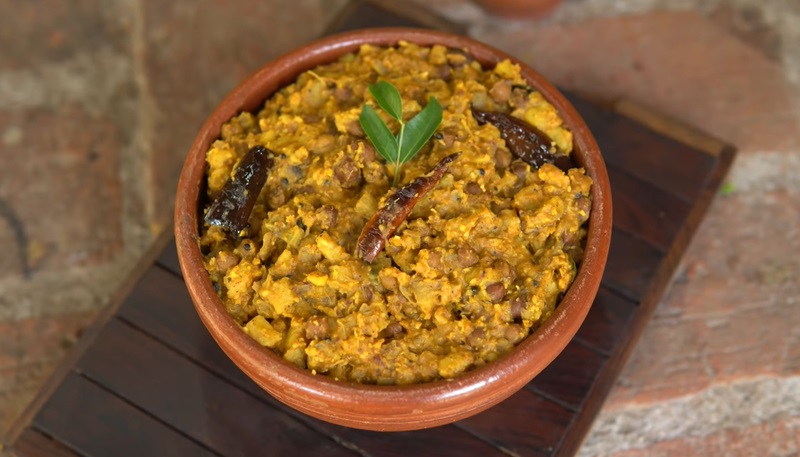
Kottu, a popular dish in Kerala's cuisine, is a flavorful assembly of paratha cut into small ribbons. The culinary process involves frying vegetables and onions on a heated iron sheet or griddle. Cooked meat, fish, or eggs are then added to the sautéed vegetables and heated briefly. The distinctive feature of Kottu lies in the addition of small pieces of cut paratha, contributing to its unique texture. The final touch involves chopping and mixing the components through repeated pounding, creating a distinct sound that resonates over a considerable distance. Variations of Kottu include beef, vegetable, egg, mutton, chicken, and fish kottu roti, offering a diverse range of choices. Often prepared as a fast-food dish, Kottu stands as a beloved culinary creation in Kerala's vibrant gastronomic scene.
Upma
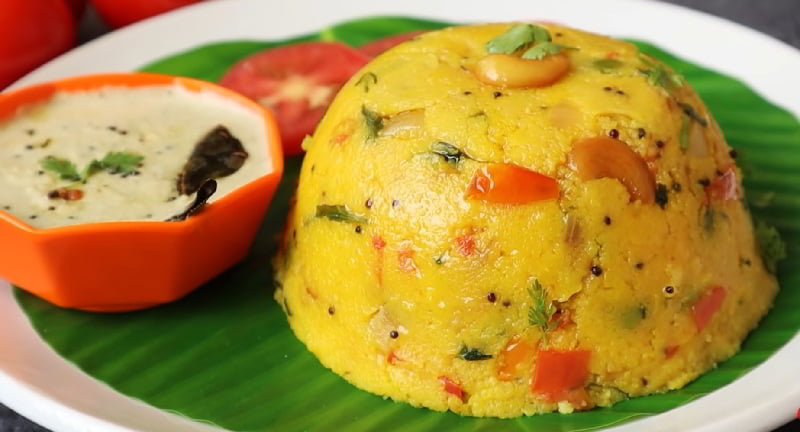
Upma, a widely enjoyed dish in Kerala cuisine, has gained popularity throughout India. The preparation begins with lightly dry roasting semolina, known as rava or sooji in India. After roasting, the semolina is set aside while a mixture of spices, lentils, onions, ginger, and more is sautéed in oil or ghee. Subsequently, the semolina rejoins the pan and is thoroughly mixed with the sautéed ingredients. Boiling water is introduced, and the mixture is stirred until the semolina absorbs the liquid, achieving a fluffy and textured consistency. With its simple yet flavorful composition, Upma has become a favored choice for breakfast or a light meal, reflecting the culinary diversity present in Kerala's gastronomic landscape.
Sadya

Kerala is renowned for its rich and diverse culinary landscape, and among its culinary treasures is the Sadya. This traditional feast, elegantly served on a banana leaf, holds a profound place in Kerala's cultural heritage, taking center stage during special occasions and festivals, particularly Onam. The Sadya stands out as a sophisticated array of vegetarian delicacies, meticulously organized in a specific order. The spread encompasses essential elements like rice, parippu (dal), sambar, avial (mixed vegetable curry), thoran (stir-fried vegetables with coconut), olan (white pumpkin curry), kalan (yogurt-based curry), pachadi (yogurt-based side dish), pickle, banana chips, and papadam. The essence of Sadya lies in the infusion of coconut in various forms—grated coconut, coconut milk, and coconut oil—imparting a distinctive flavor and richness to the dishes. A blend of spices, including turmeric, ginger, garlic, cumin, mustard seeds, and curry leaves, enhances the overall taste and aroma of the Sadya. Beyond being a mere meal, the Sadya offers a sensory journey where the harmonious interplay of flavors, textures, and colors creates a well-balanced culinary experience. It stands as a tribute to Kerala's culinary legacy, showcasing the vibrant and indulgent nature of its cuisine.
Rasam
-1705473002.jpg)
Rasam is a popular traditional dish in Kerala cuisine, hailing from the southern state of Kerala in India. It is a tangy and spicy soup-like dish made with a unique blend of spices, tamarind, and tomatoes. Rasam is known for its refreshing and appetizing flavors that make it a staple in South Indian households. The preparation of Rasam involves boiling a mixture of lentils, tomatoes, tamarind pulp, and a medley of spices such as cumin, black pepper, mustard seeds, and curry leaves. The dish is typically seasoned with a tempering of ghee, mustard seeds, and dried red chilies. The result is a flavorful and aromatic broth that is often enjoyed with steamed rice or served as a comforting soup. Rasam is not only delicious but also has numerous health benefits. It aids digestion, boosts the immune system, and provides relief from common ailments like colds and coughs. It is also light on the stomach, making it a popular choice for a comforting meal. Whether served as a main dish or a side, Rasam is a delightful addition to any Kerala cuisine spread, providing a burst of flavors that truly capture the essence of South Indian cooking.
Banana Chip
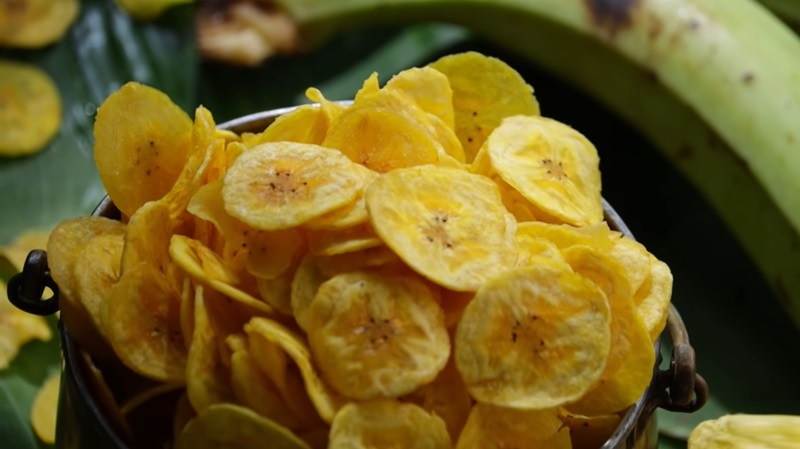
Banana chips, also known as "upperi" in Kerala, are a popular and traditional snack in the South Indian state of Kerala. Made from raw bananas, these chips are thinly sliced and then deep-fried until they turn crispy and golden brown. The process of making banana chips involves carefully slicing the raw bananas into thin rounds using a mandoline or a sharp knife. The slices are then fried in hot oil until they become crispy and crunchy. The key to achieving the perfect texture is to slice the bananas uniformly and fry them at the right temperature. With their unique taste and crispy texture, banana chips have become a favorite snack not only in Kerala but also across India and even internationally. They are widely available in stores and are also made at home in many households, keeping the tradition alive.
Banana fritter
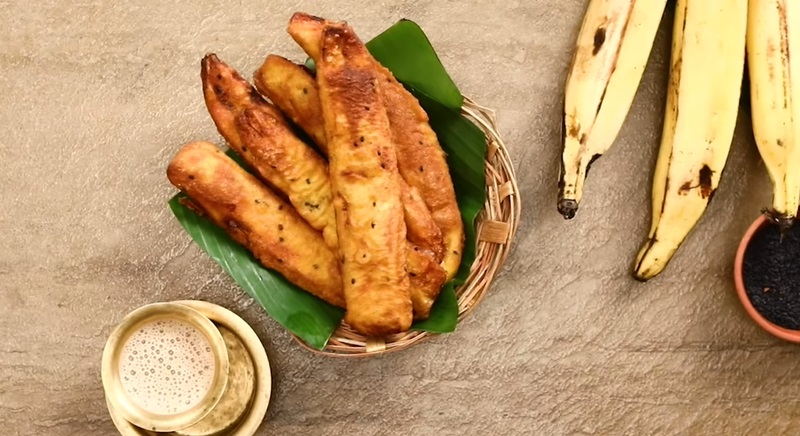
Kerala cuisine boasts a wide variety of delicious dishes, and one popular delicacy is the banana fritter. Known locally as "Pazham Pori," this dish is loved by both locals and tourists alike. The banana fritter is made using ripe bananas that are sliced and coated in a batter made from maida flour and a pinch of turmeric powder. The batter is often flavored with cardamom powder and sometimes a hint of vanilla or nutmeg. The coated banana slices are then deep-fried until they turn golden brown and crispy. The result is a delectable treat that combines the natural sweetness of the ripe bananas with the crispy texture of the fried batter. The banana fritter is often served hot and enjoyed as a snack or a dessert. It is commonly paired with a cup of hot tea or coffee, making it a perfect accompaniment for a relaxing evening. Banana fritters are not only tasty but also nutritious, as bananas are a good source of vitamins and dietary fiber. So, if you ever visit Kerala, do not miss the opportunity to savor this delightful and popular dish.
Paddu

Paddu, also recognized as Appe, is a cherished traditional dish originating from the South Indian state of Kerala. Crafted from a batter comprising black lentils and rice, akin to the mix used for idli and dosa, Paddu is a culinary delight. This versatile dish can be prepared with either a spicy or sweet twist, incorporating chillies for heat or jaggery for sweetness. The distinctive preparation process involves utilizing a special pan equipped with multiple small indentations, imparting the characteristic round shape to each Paddu. This culinary creation not only reflects the culinary diversity of Kerala but also serves as a delightful addition to the array of South Indian dishes enjoyed across the region.
Achappam
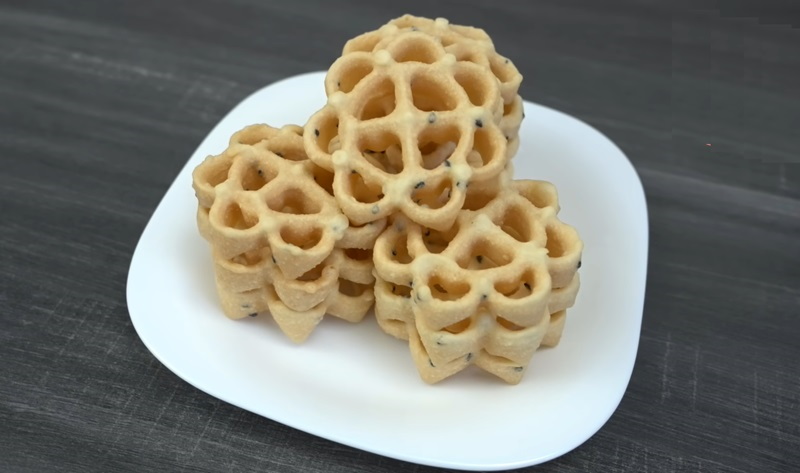
Achappam, a deep-fried rose cookie crafted from rice flour, is a delectable treat. The distinctive size, shape, and surface impression of Achappam are achieved using patterned irons or molds. The preparation involves heating the iron, immersing it into the batter, and then re-dipping it in hot oil to create a crisp shell around the metal. Once the cookie separates from the iron, it is lifted from the oil. The batter for Achappam consists of a blend of sugar, eggs, wheat or rice flour, and coconut milk. Enjoyed either plain or infused with flavors like sesame, cumin, and cardamom, Achappam offers a delightful fusion of textures and tastes, making it a cherished delicacy in South Indian cuisine.
Tapioca Chip
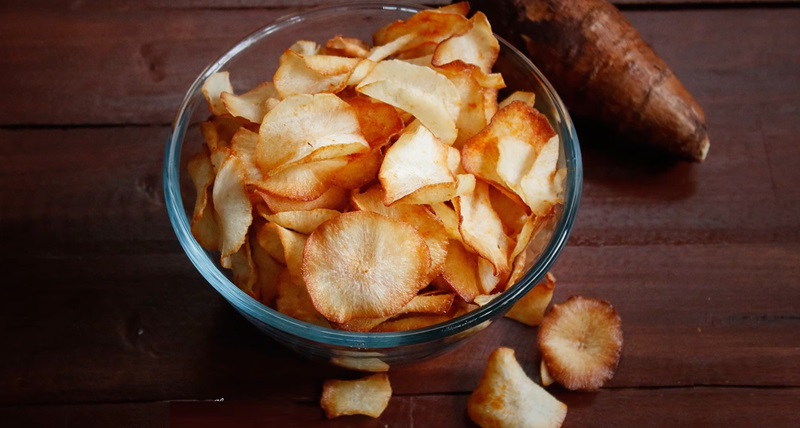
Tapioca chips, a popular dish in Kerala cuisine, are a delightful and flavorful snack made from deep-fried cassava root. To prepare tapioca chips, the cassava root is first peeled and sliced into thin, even pieces. These slices are then deep-fried in hot oil until they turn golden brown and crispy. The result is a crunchy and addictive snack that is loved by locals and visitors alike. The tapioca chips are usually seasoned with a blend of spices to enhance their taste. Common seasonings include salt, red chili powder, and turmeric. Some variations may include additional spices like black pepper or cumin for an extra kick. Tapioca chips are typically enjoyed on their own as a snack, but they can also be served alongside chutneys or dips for added flavor. The combination of the crispy texture and the aromatic spices makes this dish a must-try for anyone looking to explore the culinary delights of Kerala.
Avial
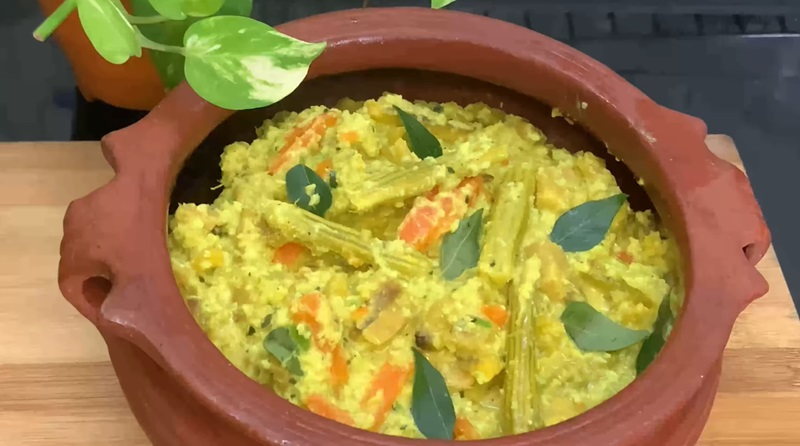
Avial, a revered dish originating from the southern Indian state of Kerala, stands out as a delectable and nutritious vegetarian delight entrenched in the region's culinary heritage. Typically, avial features a medley of crisp vegetables, with common additions including elephant foot yam, plantain, ash melon, carrots, beans, brinjal, cucumber, drumstick pods, snake gourd, and broad beans. Variants may incorporate bitter gourd or tomatoes. Some enthusiasts opt to omit curd or substitute it with raw mango or tamarind pulp. Avial can manifest as a gravy or a semi-solid side dish, traditionally relished with rice. The term "avial" also carries the meaning of 'boiled' or 'cooked in water,' alluding to the dish's preparation method. This beloved dish encapsulates the essence of Kerala's vibrant culinary tapestry.
Thoran
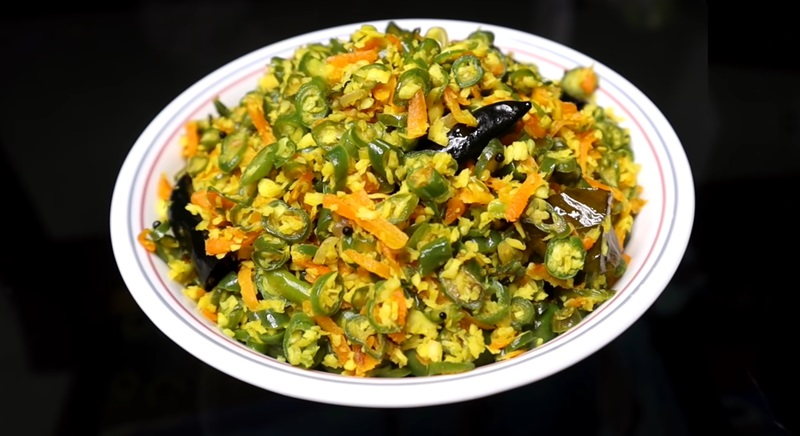
Thoran, a distinctive dry vegetable dish with coconut, traces its origins to the Indian state of Kerala. This culinary gem is a staple, often paired with rice and curry, forming an integral part of the traditional Keralite sadhya. Thoran encompasses a variety of finely chopped vegetables, including bitter gourd, cabbage, unripe jackfruit, yardlong beans, bean varieties, or elephant foot yam. It may also feature leaves such as green or red spinach, Moringa oleifera, or Ipomoea aquatica, as well as flowers like Moringa oleifera. The preparation involves mixing the chopped vegetables with curry leaves, mustard seeds, turmeric powder, and grated coconut, sautéed briefly on a high-heat pan. This culinary delight reflects the rich tapestry of Kerala's gastronomic traditions.
Kozhukkatta
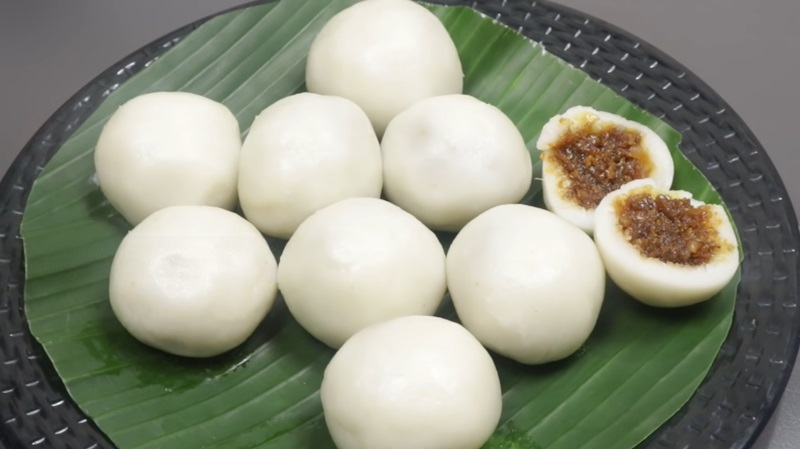
Kozhukkatta, a cherished delicacy originating from the lively state of Kerala, India, stands as a sweet dumpling revered during festive celebrations. The preparation involves blending grated coconut with jaggery syrup, encasing this delectable mixture within rice flour dumplings, and steaming them to perfection. For an enhanced taste, additions like cardamom, ghee, and finely ground roasted rice flour may complement the filling. There exists a variant of kozhukatta crafted with atta flour and combined with grated coconut, becoming a staple breakfast among certain groups. This culinary creation encapsulates the essence of Kerala's rich and diverse gastronomic traditions, adding sweetness to joyous occasions.
Kanji
-1707741854.jpg)
Kanji is a revered dish in Kerala cuisine, offering diverse variations in its preparation. Dawhi Kanji, prepared either with boiled rice or gram flour (Besan), incorporates curd into the dish. Pariba Kanji involves boiling raw vegetables in a Karahi, with the addition of curd and gram or rice flour. Torani Kanji utilizes fermented rice water (torani) with the option of adding Ambula for a sour flavor. Shāg or Patra Kanji includes greens like drumstick leaves, shallot leaves, purple amaranthus, or gorkura. Farmers offer Torani Kanji to their farmland during Kanji Anla Osha for a fruitful harvest. Regional variations include prawn, crab, dry fish, and khadā kanji, showcasing the diverse culinary landscape of Kerala. This dish holds cultural significance, being offered in festivals to deities like Jagannath and Sathi.
Pachadi
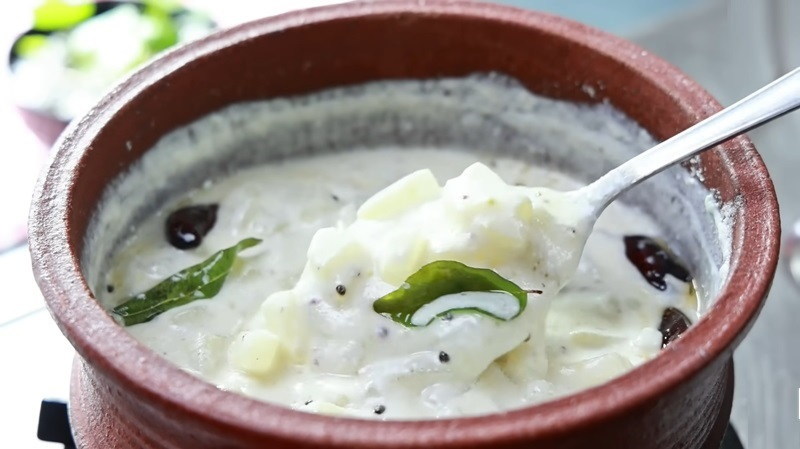
Pachadi is a traditional dish from the vibrant state of Kerala, located in the southern part of India. Known for its rich and diverse cuisine, Kerala offers a wide array of flavors and ingredients, and Pachadi is no exception. Pachadi is a type of side dish or condiment that is made by blending together a variety of vegetables or fruits with coconut, yogurt, and spices. The key to a delicious Pachadi lies in the balance of flavors. The sweetness of the fruits or vegetables is complemented by the tanginess of yogurt and the mild heat of spices such as green chili and mustard seeds. The use of freshly grated coconut adds a creamy texture and enhances the overall taste. Some popular variations of Pachadi include pineapple, cucumber, beetroot, and mango. Each variation brings its own unique taste and texture to the dish. Pachadi is typically served as an accompaniment to rice or flatbreads and is a staple in Kerala's traditional feasts and festivals.
Pathiri
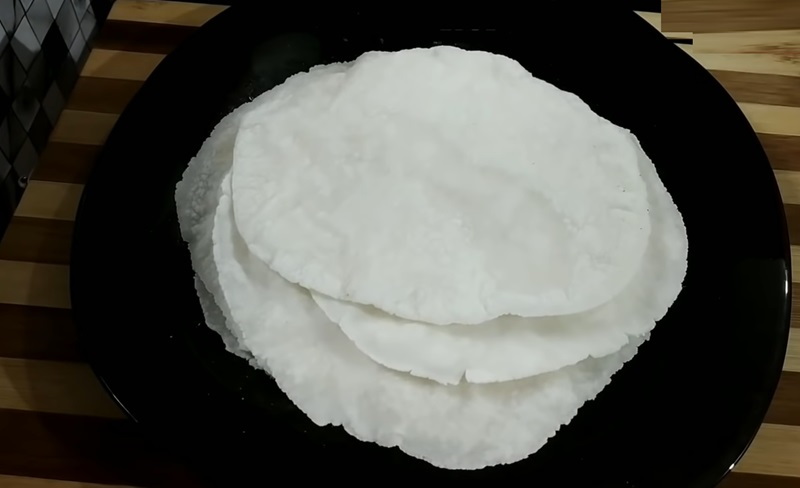
Pathiri, a traditional culinary gem hailing from the South Indian state of Kerala, is a flatbread that stands as a staple in the region's gastronomy. Crafted from rice flour, this thin, soft, and circular delicacy, reminiscent of a pancake, plays a central role in Kerala's culinary heritage. Typically paired with an array of curries and gravies, the making of pathiri involves the meticulous process of kneading rice flour with water to form a smooth dough. This dough is then expertly rolled into petite discs and skillfully cooked on a hot griddle or tawa until achieving a delicate light golden brown hue, ensuring the pathiri's retention of its soft and pliable texture. Pathiri's culinary versatility shines through as it harmonizes effortlessly with both vegetarian and non-vegetarian curries, ranging from the rich flavors of chicken and beef curry to the wholesome goodness of vegetable stew. It is equally delightful when accompanied by coconut-based gravies like kadala curry or fish curry. The amalgamation of the soft pathiri with these flavorful curries creates a gratifying and memorable dining experience.
Malabar Matthi Curry
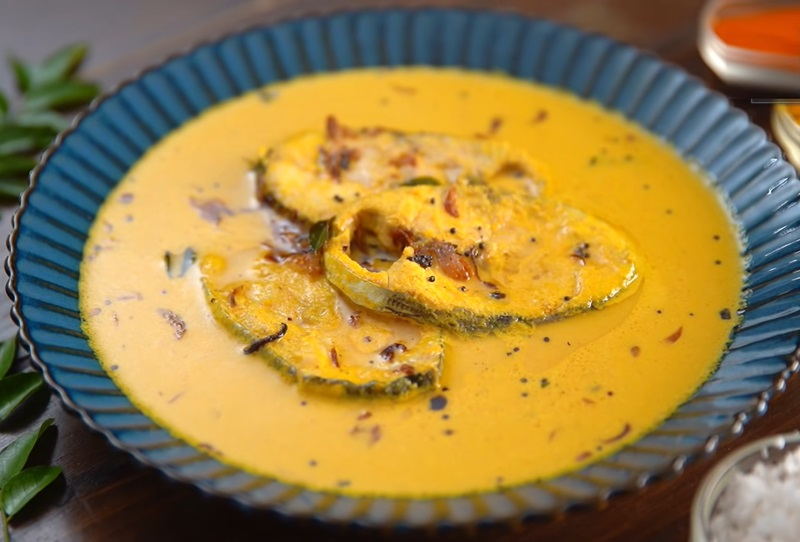
Malabar Matthi Curry is a traditional and popular dish from the South Indian state of Kerala. It is a delectable fish curry made with sardines, locally known as "mathi" or "chaala." This dish is a staple in the Malabar region of Kerala and is enjoyed by locals and tourists alike. The base of Malabar Matthi Curry is a rich and flavorful coconut gravy. The curry is made by grinding together fresh coconut, spices, ginger, garlic, and shallots. This mixture is then cooked in coconut oil until it becomes aromatic and the flavors are released. The sardines, cleaned and marinated with turmeric and salt, are added to the gravy and cooked until they are tender and infused with the coconut and spice flavors. Malabar Matthi Curry is known for its perfect balance of spices, tanginess, and creaminess from the coconut. It is usually enjoyed with steamed rice or traditional Kerala bread called "appam." The combination of soft and succulent sardines with the rich and fragrant curry makes for a truly satisfying and authentic Kerala culinary experience.
Parotta
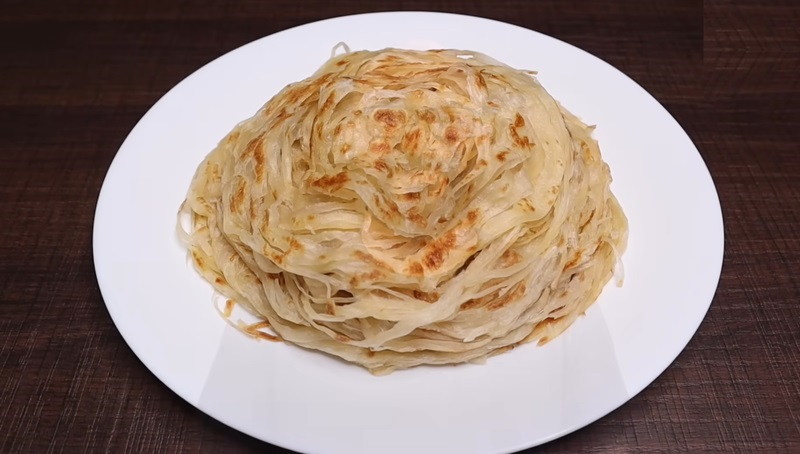
Parotta is a popular and delicious dish from the cuisine of Kerala, a state in the southern part of India. It is a flaky and layered flatbread made from all-purpose flour, oil or ghee, and water. The dough is kneaded and then stretched and folded multiple times to create the distinct layers. It is then shaped into round discs and cooked on a griddle until it turns golden brown and crispy. Parotta is usually enjoyed with a variety of side dishes. It pairs perfectly with spicy curries such as chicken or mutton curry, vegetable kurma, or egg curry. It can also be served with a range of chutneys and pickles. The unique texture of parotta, with its crisp exterior and soft, flaky layers, makes it a delight to eat. It is often torn into bite-sized pieces and eaten with the hands, allowing the flavors of the accompanying dishes to blend together. Parotta is a staple in Kerala's street food scene and is also commonly served in restaurants and homes. Overall, parotta is a delicious and versatile dish that is loved by locals and tourists alike, and it is a must-try when exploring Kerala's cuisine.
Unni appam
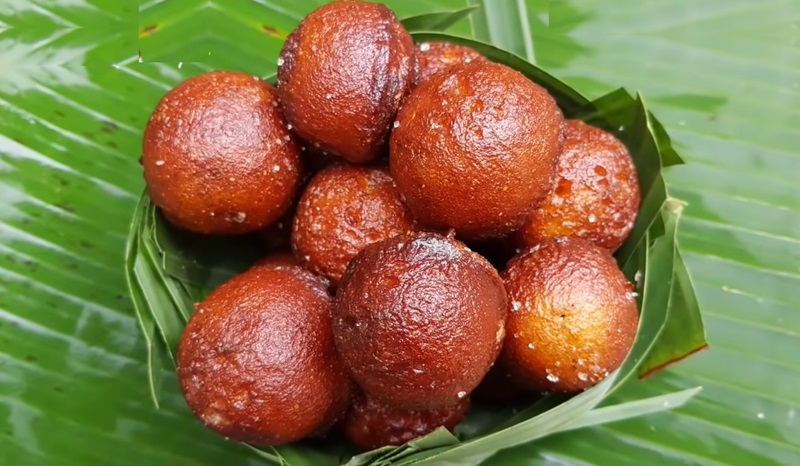
Unni appam, a delightful small, round snack with its roots in Kerala, is created from a batter comprising rice, banana, ghee, jaggery, roasted coconut pieces, sesame seeds, and cardamom powder. The mixture is skillfully fried to perfection in oil. While the traditional recipe features banana, a modern variation emerged in the late '90s, introducing jackfruit preserves as a flavorful alternative. Known for its organic and spongy texture, unni appam has gained popularity, becoming a beloved snack in Kerala's culinary scene. The name "unni" meaning small, and "appam," signifying rice cake in Malayalam, perfectly encapsulates the essence of this delicious treat.
Kalathappam
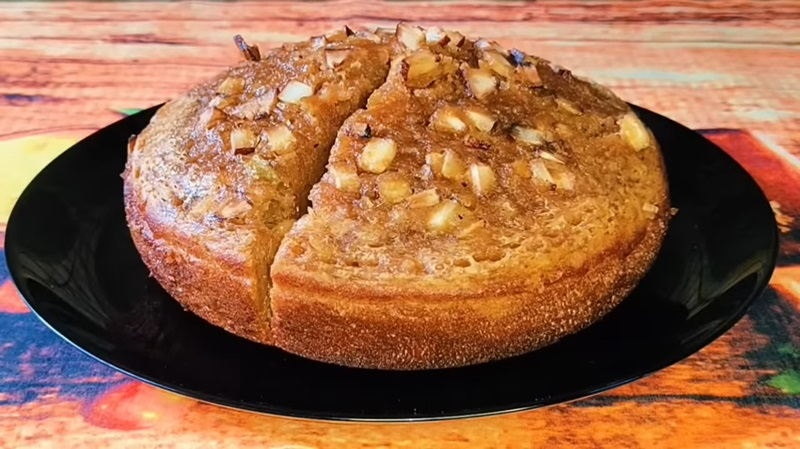
Kalathappam is a traditional and popular dish from the state of Kerala in South India. It is a type of rice cake made using a simple batter of rice, coconut, jaggery, and shallots. To prepare Kalathappam, rice is soaked for a few hours and then ground into a smooth paste along with grated coconut and jaggery. Shallots are finely chopped and added to the batter, giving it a unique flavor. The batter is then poured into the greased pan and cooked on a low flame until it turns golden brown and crispy on the outside while remaining soft and fluffy on the inside. The aroma of the coconut and the sweetness of the jaggery make Kalathappam a delightful treat for the taste buds. It is often enjoyed as a snack with a cup of tea or coffee, or as a dessert after a meal. Kalathappam is also a popular dish during festivals and special occasions in Kerala. With its simple ingredients and delicious taste, Kalathappam is a beloved dish that showcases the rich culinary heritage of Kerala.
Neyyappam
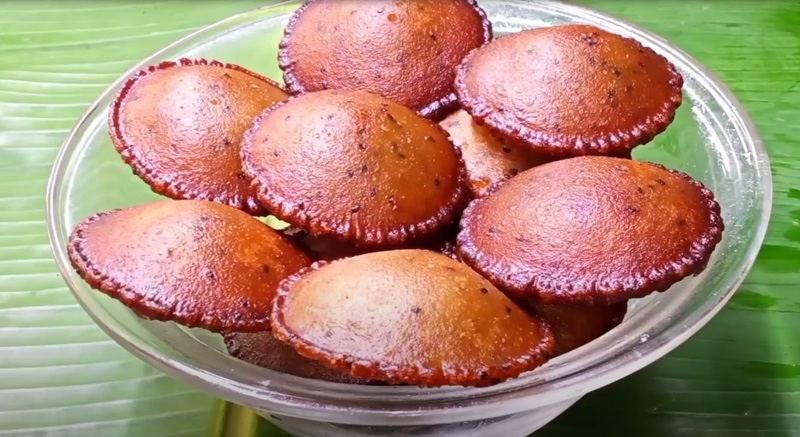
Neyyappam, a delectable sweet rice-based fritter fried in ghee, traces its roots to the southern Indian state of Kerala and coastal Karnataka. The name "Neyyappam" is a combination of "neyy," meaning clarified butter or ghee, and "appam," referring to a pancake. This traditional treat is crafted using ghee, cardamom, rice flour (or semolina), ghee-fried coconut, jaggery, and milk. Neyyappam is often enjoyed as a tea-time snack, typically in the evenings, and holds significance as an offering in Hindu temples in Kerala. This delightful dish is especially prominent during Navaratri and Kartika Deepotsava. Interestingly, some Christian communities in Kerala have also embraced this tradition.
Ada pradhaman

Ada pradhaman is a delectable traditional dessert from the South Indian state of Kerala. It is a rich and creamy rice pudding made with ada (rice flakes), jaggery (unrefined cane sugar), coconut milk, and a generous amount of ghee (clarified butter). The dish is flavored with cardamom and garnished with roasted coconut and cashew nuts. To make Ada pradhaman, the ada is first cooked until soft and then simmered in jaggery syrup and coconut milk until it reaches a thick and creamy consistency. The dish is then infused with the aroma of cardamom, which adds a delightful fragrance. The roasted coconut and cashew nuts provide a crunchy texture and enhance the overall flavor profile.
Kerala Beef Fry

Kerala beef fry is a popular and mouthwatering dish from the South Indian state of Kerala. Known for its rich flavors and spicy taste, this dish is a favorite among meat lovers. The key ingredient of Kerala beef fry is tender beef, which is marinated with a blend of aromatic spices like turmeric, black pepper, coriander, and ginger-garlic paste. The marinated beef is then cooked in a pan with onions, curry leaves, and green chilies until it becomes tender and well-cooked. The result is a delicious and spicy beef fry with a perfect balance of flavors. The combination of the juicy and succulent beef with the aromatic spices creates a tantalizing taste that is hard to resist.
Chatti Pathiri
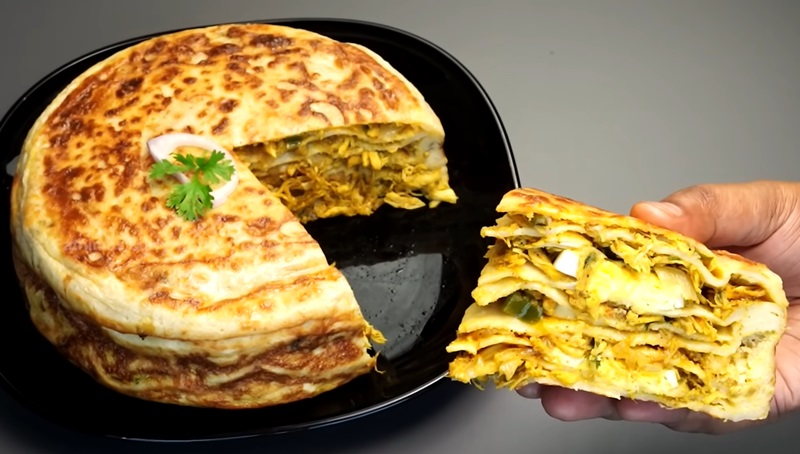
Chatti Pathiri, a culinary delight from the Malabar region in Kerala, India, is a layered pastry showcasing a harmonious blend of flour, egg, oil, and water in its pastry sheets or pancakes. This versatile treat offers a choice between sweet and savory variations. The sweet version features a filling of sweetened seasoned beaten eggs, nuts, and raisins, while the savory alternative incorporates the traditional meat filling found in samosas or savory puffs. The preparation involves kneading the flour into a soft dough, rolling it into thin pancakes, softening them in milk, and then assembling them in layers with the chosen filling. The final touch involves baking this delectable creation to perfection.
Theeyal
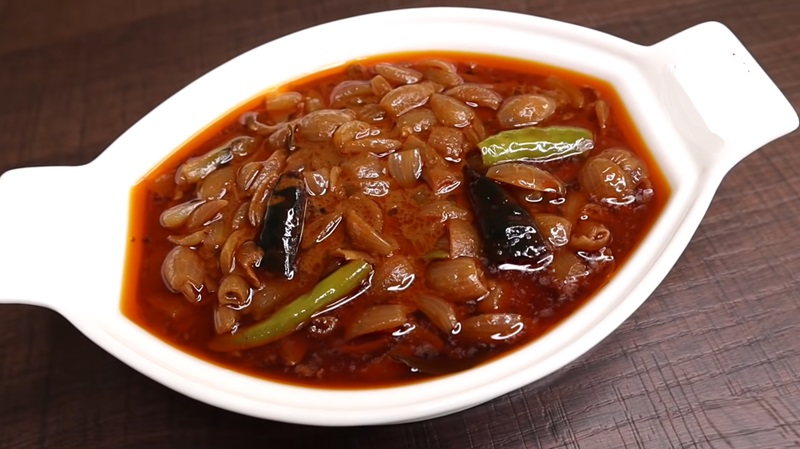
Theeyal, a traditional South Indian dish hailing from the state of Kerala, boasts a soupy consistency and a distinctive flavor profile. The preparation involves a blend of coriander seeds, dried red chili, roasted coconut, and fenugreek, ground into a flavorful paste. This spice mixture is then cooked in tamarind water along with assorted vegetables, resulting in a rich medium-brown gravy. The name "Theeyal," meaning "burnt dish," aptly describes its dark brown hue derived from the toasting of grated coconut and the inclusion of tamarind. Commonly served with rice, Theeyal is a staple in Kerala cuisine, often finding a place in traditional Sadya menus. Popular variations include prawns and a range of vegetables such as okra, pearl onion, cucumber, eggplant, bitter melon, potato, and raw mango.
Unnakai
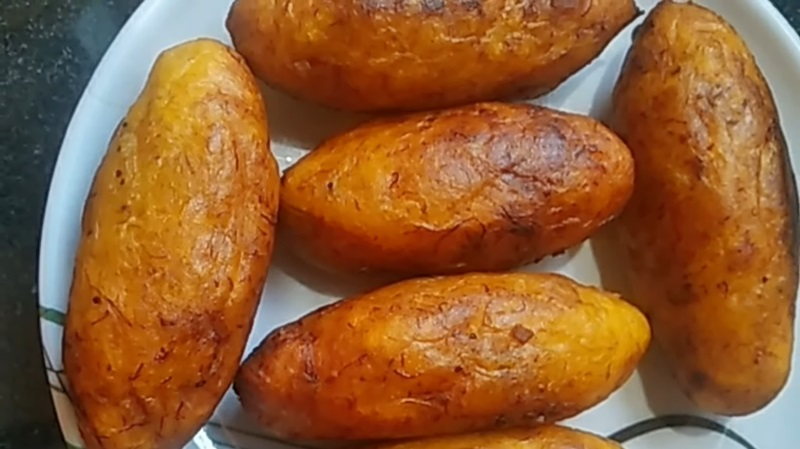
Unnakai is a popular and delicious sweet dish from the state of Kerala, located in the southern part of India. It is a unique and traditional recipe that is loved by locals and tourists alike. Unnakai is often prepared during festive occasions and celebrations. The dish gets its name from the Malayalam word "unnakai," which means "filled up." It is made by stuffing a mixture of ripe bananas, grated coconut, sugar, and cardamom into a flattened and elongated dough made from rice flour. The dough is then rolled and shaped into a cylindrical or banana-like shape. The filled dough is then steamed or deep-fried until it turns golden brown and crispy. The result is a mouthwatering delicacy with a sweet and aromatic filling that perfectly complements the outer layer. Unnakai is enjoyed as a snack or dessert and is often served with tea or coffee. The combination of the soft and sweet filling with the crunchy texture of the outer layer makes it a delightful treat for those with a sweet tooth. Overall, Unnakai is a delectable and visually appealing dish that showcases the rich flavors and culinary traditions of Kerala cuisine.
Spiced Rice
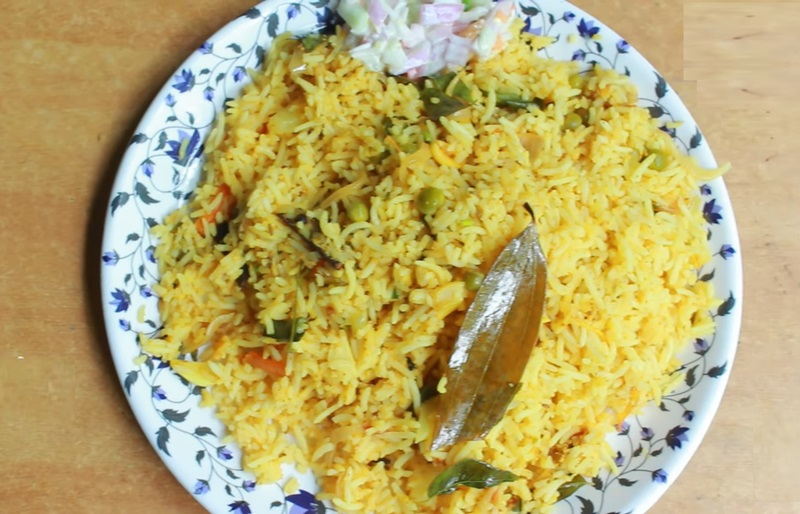
Flavored with an array of spices, spiced rice is a globally cherished rice-based dish. One standout rendition is Indian Ghee rice, where ghee butter takes center stage as a primary ingredient. The aromatic and flavorful essence of spiced rice has captured the culinary preferences of people worldwide. In particular, the Malabar region of Kerala, India, holds a notable tradition of crafting exquisite spiced rice dishes. Drawing inspiration from diverse spice blends, these rice creations showcase the rich culinary heritage and preferences of the local populace. Whether enjoyed on its own or paired with complementary dishes, spiced rice stands as a versatile and beloved culinary delight embraced across cultures and regions.
Pesaha Appam
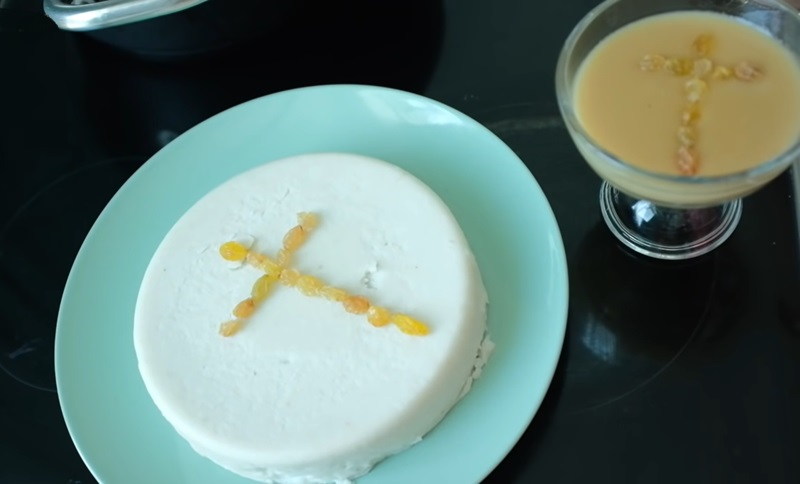
Pesaha appam, a traditional rice cake in Kerala cuisine, distinguishes itself from palappam by its unique preparation. Unlike palappam, it doesn't undergo fermentation with yeast. The batter, crafted from rice, takes on a distinctive quality. A significant ritual involves creating a cross using palm leaves from Palm Sunday, which is then carefully placed in the center of the batter. This sacred practice adds a symbolic touch to the culinary tradition, connecting it with religious significance. As the Pesaha appam takes shape, it becomes a meaningful and cherished part of Kerala's culinary and cultural landscape, bridging the realms of tradition and taste in a manner that reflects the cultural richness of the region.
Erachichor
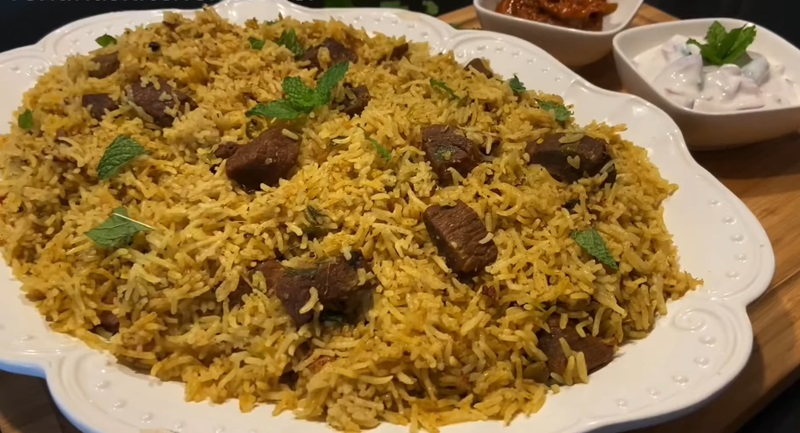
Erachichor, also known as Erachi Choru or Irachichoru, stands out as a traditional meat-rice delicacy within Kerala cuisine. Particularly popular in the Malabar region of Kerala, India, Erachichor might share a visual resemblance with Biryani, but its distinct preparation method and flavor set it apart. Prepared in a mud pot, Erachichor is steamed to perfection with a banana leaf covering, contributing to its unique taste and texture. While its appearance might lead to some confusion, Erachichor maintains its individuality, offering a delightful culinary experience that reflects the rich culinary diversity of Kerala.
Pidiyum Kozhiyum
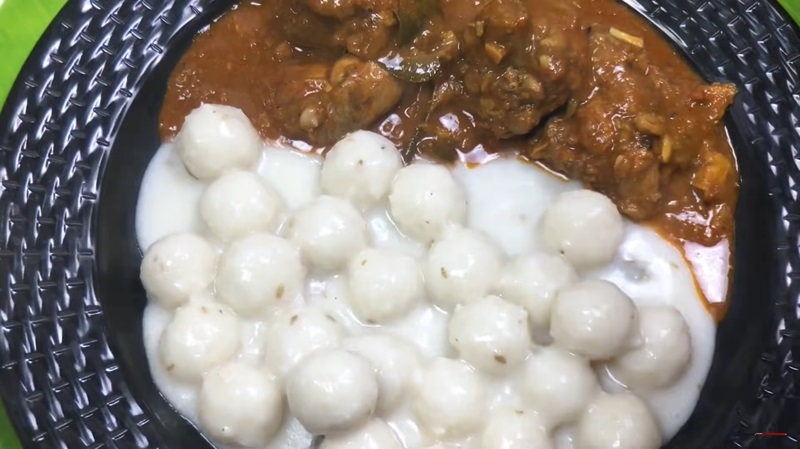
Pidiyum Kozhiyum, a cherished traditional dish from the southern state of Kerala in India, offers a delightful culinary experience suitable for both breakfast and dinner. The term 'Pidi' refers to a whitish semi-liquid preparation featuring small boiled balls made from finely powdered rice. Complementing this, 'Kozhi' in 'Pidiyum Kozhiyum' signifies a flavorful chicken curry crafted with traditional ingredients. Renowned for its wholesome composition, the dish is esteemed for its richness in fibers, proteins, and carbohydrates, making it a not only a delicious but also a nutritious choice in Kerala's culinary tapestry.
Injipuli
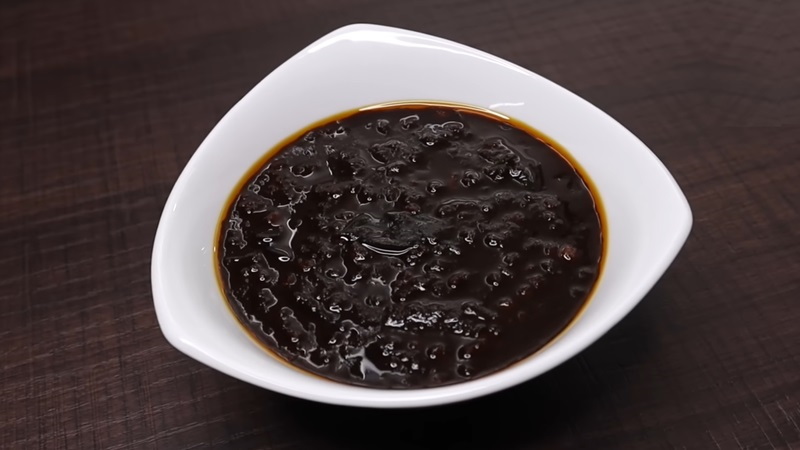
Injipuli, a delectable sweet-sour and spicy pickle, is a quintessential part of Kerala cuisine. This dark brown condiment is meticulously crafted from a harmonious blend of ginger, tamarind, green chilies, and jaggery. Traditionally associated with the festive celebrations of Onam, Injipuli adds a burst of flavors to the culinary landscape of Kerala. The complex combination of sweet and sour notes, coupled with a hint of spice, creates a pickle that tantalizes the taste buds. Injipuli is not just a culinary delight but also a cultural emblem, symbolizing the vibrant and festive spirit of Kerala's gastronomic traditions, particularly during the joyous occasion of Onam.
Chammanthi podi
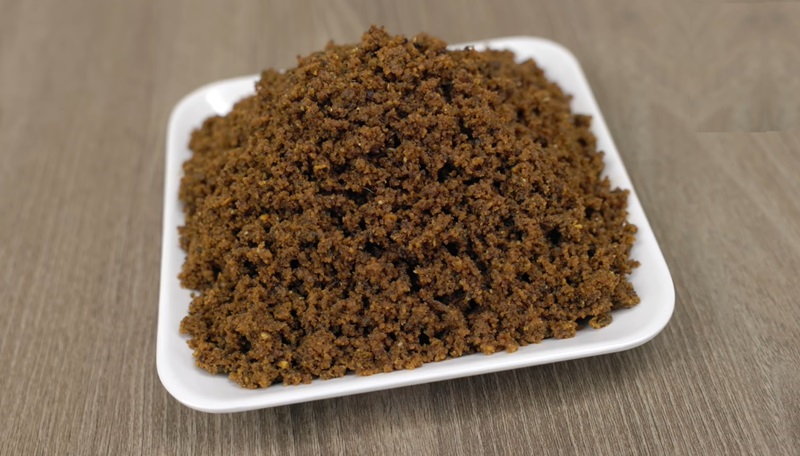
Chammanthi Podi, a dry condiment and chutney originating from the South Indian state of Kerala, serves as a traditional preservation method for coconut chutneys. Regular coconut chutneys are prone to spoilage without refrigeration, prompting the creation of Chammanthi Podi as a means to extend their shelf life for months. To craft Chammanthi Podi, shredded coconut and spices undergo a meticulous dry-roasting process in a pan, effectively eliminating moisture from the mixture. The desiccated blend is then finely ground and stored, ready for later use. The term "chammanthi" translates to chutney or sauce, while "podi" denotes powder in Malayalam, encapsulating the essence of this time-honored culinary practice in Kerala.
Olan
-1707781401.jpg)
Olan is a traditional dish from the state of Kerala in South India. It is a simple yet flavorful dish that is typically made with ash gourd (also known as winter melon or white pumpkin), cowpeas (known as red gram or black-eyed peas), coconut milk, and a touch of coconut oil. To prepare Olan, the ash gourd is first cooked until tender and then combined with cooked cowpeas. This mixture is then simmered in a coconut milk base, which lends a creamy and mildly sweet flavor to the dish. The addition of green chilies and curry leaves adds a subtle spicy and aromatic touch. Olan is often served as part of a traditional Kerala feast called Sadya, where it is enjoyed with steamed rice and other delectable vegetarian dishes. The combination of the tender ash gourd, creamy coconut milk, and earthy cowpeas creates a harmonious blend of flavors and textures.
Mezhukkupuratti
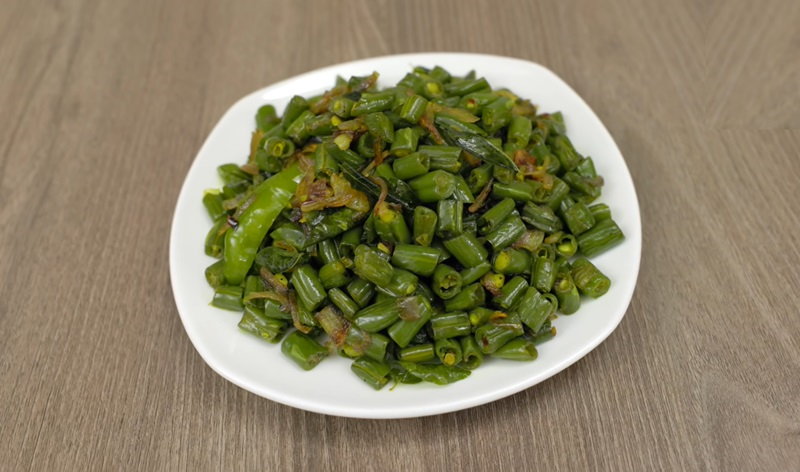
Mezhukkupuratti, originating from the state of Kerala in South India, is a traditional dish renowned for its unique preparation method and robust flavors. This vegetarian dish is typically composed of stir-fried or sautéed vegetables, resulting in a dry and well-seasoned side dish. To prepare Mezhukkupuratti, vegetables such as raw banana, yam, or French beans are pan-fried with a seasoned blend of spices, which may include mustard seeds, curry leaves, turmeric, and grated coconut. The outcome is a dish that boasts a delightful fusion of textures and an explosion of aromatic flavors. Mezhukkupuratti holds a prominent position in Kerala's culinary heritage and is often served alongside rice, complementing traditional dishes like sambar or rasam. The dish is a testament to the region's commitment to utilizing locally available ingredients and the culinary art of harmonizing spices to craft a gratifying and nourishing dining experience.
Sukiyan
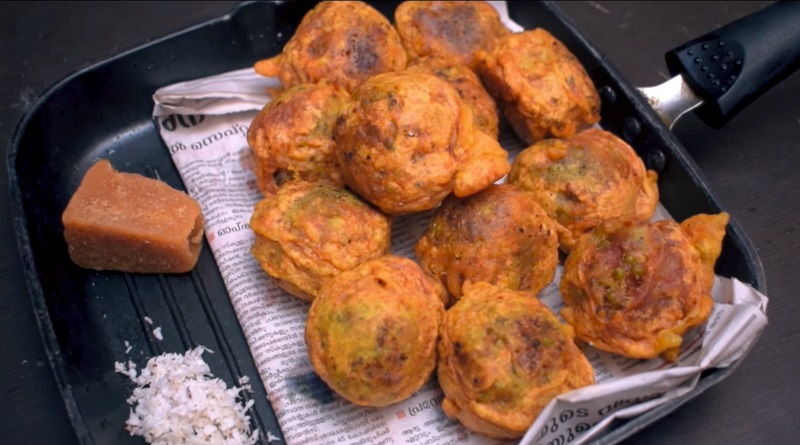
Sukiyan, also known as sukhiyan or sugiyan, is a delectable fritter made from a blend of pulses, jaggery, and maida flour, showcasing its popularity in South Indian culinary traditions. Often referred to as "Suguntalu," this versatile treat finds its place as a breakfast item, side dish, or snack. The preparation involves cooking mung beans, which are then ground to create a flavorful stuffing resembling ping pong balls, subsequently deep-fried in coconut oil or any preferred oil. The mung beans are blended with cardamom powder, boiled jaggery, cumin powder, grated coconut, and dried ginger powder, forming small balls. These balls are coated with a mixture of maida, rice flour, and a touch of turmeric for a golden hue, before being deep-fried to perfection, resulting in a crispy and sweet delight.
Kaalan
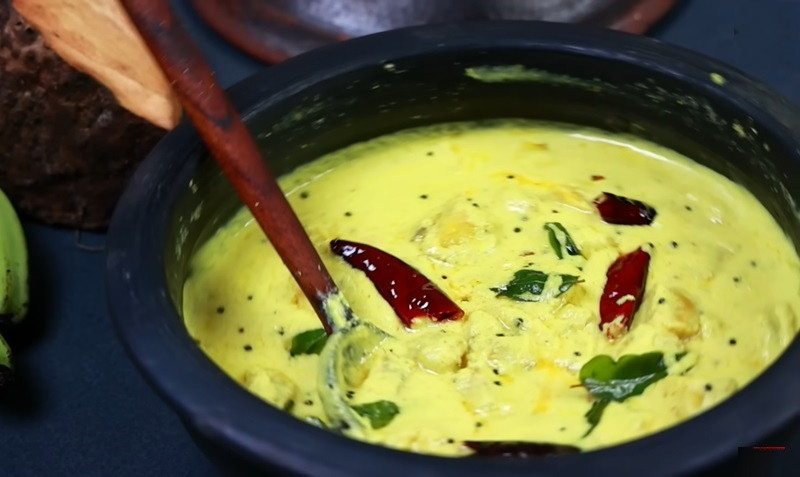
Kaalan, a traditional Keralite dish hailing from South India, is crafted from a rich blend of yogurt, coconut, and either a raw fruit, the nendra kaaya, or a tuber such as the chena. Notably thick in consistency, it sets itself apart from similar curries like pulisseri, boasting a distinctive sourness that exceeds that of avial. This characteristic sourness contributes to its prolonged shelf life when stored. Some variations of Kaalan incorporate additional pepper and/or chillies to impart a spicy kick, enhancing the dish's flavor profile alongside its signature tanginess. Often featured as a prominent component of the Sadya, Kaalan stands as a testament to the culinary diversity and richness of Kerala cuisine.
Chakkavaratti
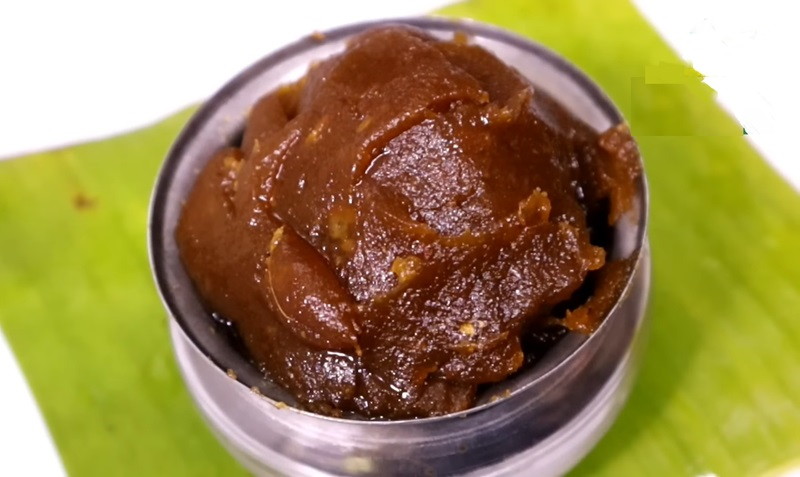
Chakkavaratti is a traditional dish from the southern Indian state of Kerala. It is a delicious and aromatic sweet made from ripe jackfruit and jaggery, a type of unrefined sugar. To prepare Chakkavaratti, the ripe jackfruit is carefully deseeded and cut into small pieces. It is then cooked with jaggery and a pinch of salt in a thick-bottomed pan over low heat. The mixture is continuously stirred until it thickens and attains a sticky consistency. The natural sweetness of the jackfruit and the rich flavor of jaggery blend perfectly, creating a delightful taste. Chakkavaratti is often served as a dessert or a snack. It has a unique texture and flavor that is loved by people of all ages.
Egg roast
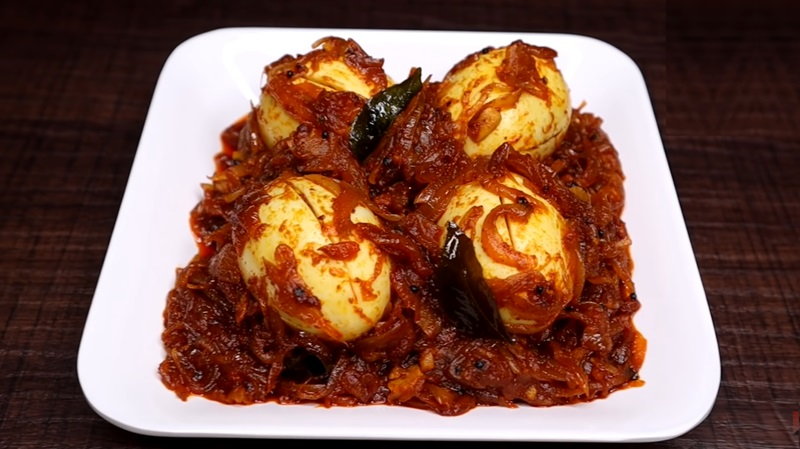
Egg roast is a popular dish in Kerala cuisine, known for its rich flavors and aromatic spices. This dish is a delicious combination of boiled eggs cooked in a thick, spicy gravy. It is a versatile dish that can be enjoyed with rice, roti, or even as a side dish with bread. To make egg roast, the boiled eggs are first peeled and then shallow fried until they develop a golden brown color. In a separate pan, a blend of aromatic spices such as onions, ginger, garlic, and green chilies is sautéed until they turn golden brown. This mixture is then seasoned with a variety of spices like turmeric, red chili powder, and garam masala, which adds a depth of flavor to the dish. Once the spices are cooked, the fried eggs are added to the pan and coated with the flavorful gravy. The dish is then cooked for a few minutes, allowing the eggs to absorb the flavors of the spices. The result is a tantalizing dish with a perfect balance of heat, sweetness, and tanginess. The egg roast is a must-try dish for anyone who loves the combination of spicy and savory flavors. Its simplicity and versatility make it a favorite among food enthusiasts, and it truly represents the essence of Kerala cuisine.
Molagoottal
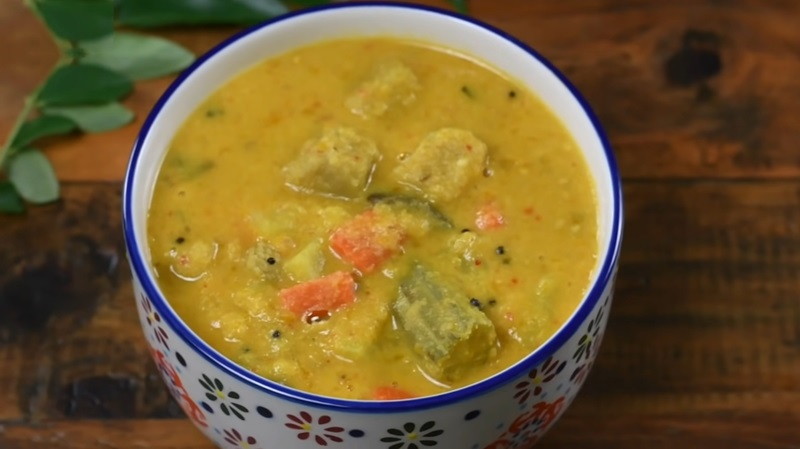
Molagoottal, a cherished dish in South Indian cuisine, is especially beloved in Kerala. Traditionally enjoyed mixed with rice, it serves as a delectable alternative to sambar or other curry dishes. What sets Molagoottal apart is its mild spice profile and the absence of tamarind, distinguishing it from its spicier counterparts. This culinary delight boasts an array of vegetables, including winter melon, drumstick, squash, cucumbers, sprouted pulses, yams, root vegetables, spinach, and various greens. Over time, Molagoottal has evolved to incorporate Western vegetables like carrots, cabbage, and potatoes, reflecting the adaptability and rich diversity within South Indian culinary traditions.
Koottukari
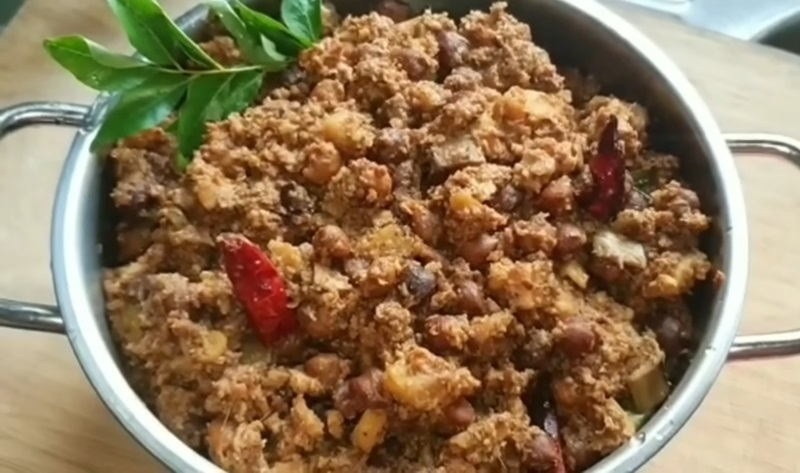
Koottukari, a prominent dish in Kerala's traditional Sadhya, stands out as a vibrant yellow curry with a delightful blend of hot and sweet flavors. This thick curry features a variety of vegetables and legumes, including yam, ash gourd, carrots, snake gourd, pumpkins, plantains, black chickpeas, and Bengal gram. The unique combination of these ingredients contributes to the rich and diverse taste of Koottukari. Widely cherished, especially during the Onam Sadhya Feast, this curry showcases the culinary artistry of Kerala, making it a flavorful and integral part of festive celebrations in the region.
Kinnathappam
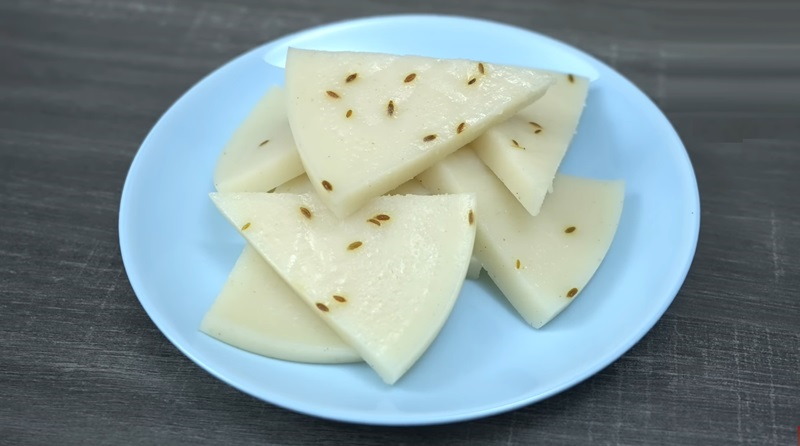
Steamed Plate Cake, commonly known as Kinnathappam, is a beloved traditional sweet enjoyed throughout Kerala in southern India. This delectable cake is crafted from a blend of rice, coconut, sugar, and cumin, creating a delightful medley of flavors. Kinnathappam comes in two variants, distinguished by color and shape. The white variant, characterized by its soft and tender texture, is simpler to prepare compared to the black and elongated version. With its unique combination of ingredients and regional popularity, Kinnathappam stands as a cherished treat, reflecting the rich culinary heritage of Kerala.
Theenmura
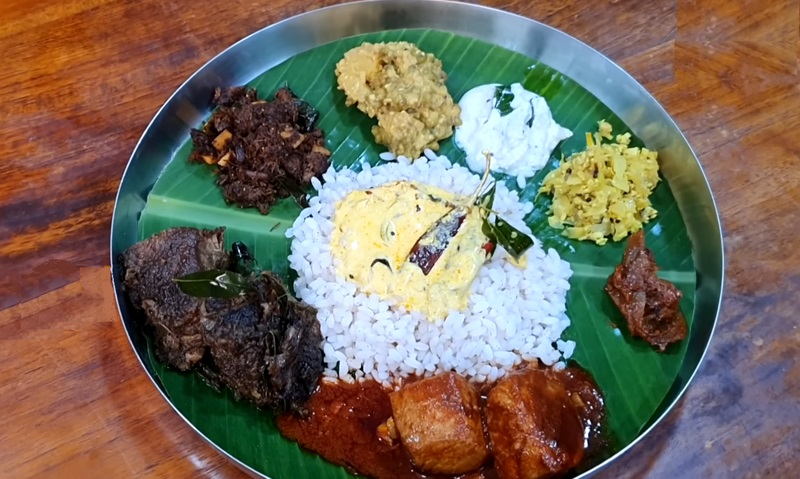
Theen Mura, also recognized as Theenmura, stands as a meaningful and traditional culinary tradition among the Saint Thomas Christians in Kerala, India. This non-vegetarian focal point assumes a crucial role in celebratory occasions, distinguishing itself from the vegetarian banquet, Sadhya, not only through its diverse selection of dishes but also in the methodical serving sequence. Prominently featured in Christian festivities like Christmas, Easter, Nalpiravi, Pindikuthi Perunnal, and Dukrana, as well as in personal milestones such as marriages, baptisms, First Communion, and engagements, Theen Mura holds a central and revered position in moments of joy. A typical spread of Theen Mura showcases a delightful assortment of dishes, encompassing cake paired with wine, toddy, meat cutlets alongside challas, appam, parotta, mutton stew, fish mollee, boiled rice, Malabar matthi curry, and beef vindaloo. With deep roots in tradition, this non-vegetarian feast becomes a culinary emblem of Christian celebrations and familial gatherings, infusing a rich and flavorful essence into the communal festivities of Kerala.
Kichadi
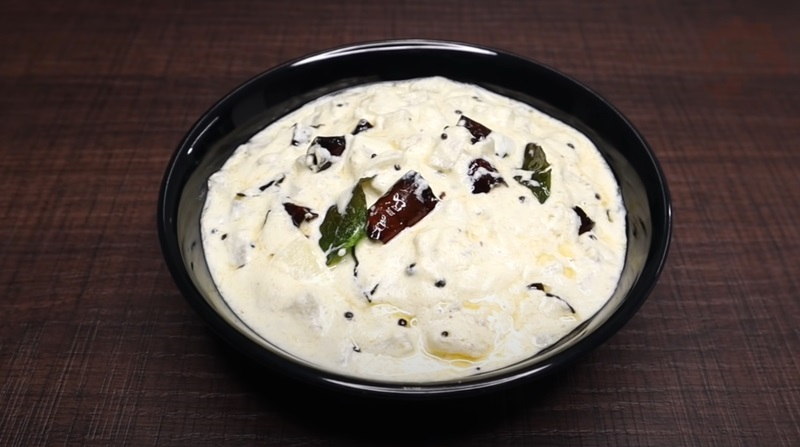
Kichadi is a traditional dish from Kerala, a state in southern India known for its vibrant and flavorful cuisine. It is a simple yet delicious dish that combines the goodness of yogurt, vegetables, and aromatic spices. Kichadi is often served as a side dish or as part of a meal during festive occasions and celebrations. The base of Kichadi is made by cooking a mixture of grated vegetables like cucumber, carrot, and beetroot in a spiced yogurt gravy. The vegetables add a refreshing crunch and vibrant colors to the dish. The yogurt is seasoned with mustard seeds, curry leaves, ginger, green chilies, and a hint of turmeric, giving it a tangy and zesty flavor. Kichadi is not only a delicious accompaniment but also has several health benefits.
Chakka prathaman
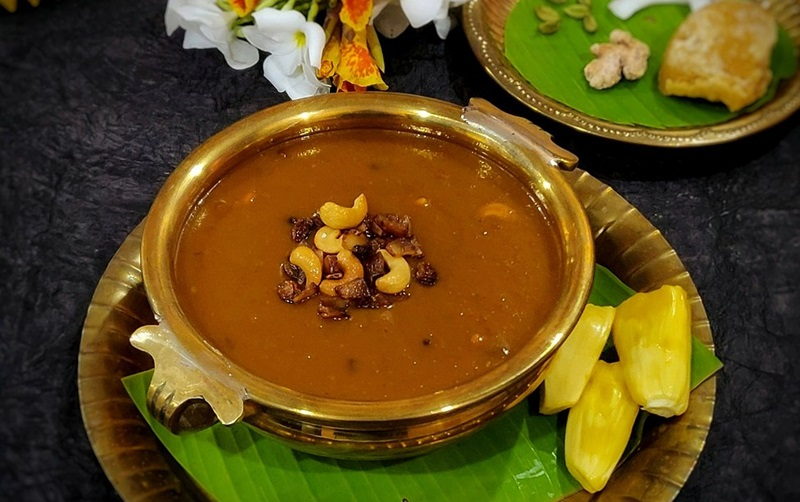
Chakka Prathaman, a traditional dessert originating from Kerala in South India, features chakka varattiyathu and jaggery as its main components. Chakka varattiyathu involves cooking chopped Chakka Chula (the edible yellow part of jackfruit) with ghee and jaggery at a high temperature until it transforms into a paste-like consistency. Prepared in a traditional uruli (a sturdy bronze vessel), this paste retains its taste for an extended period and is stored in porcelain bharani to preserve its flavors. To create the prathaman, the chakka varattiyathu is combined with water and additional jaggery, then boiled until the jaggery dissolves. Grated raw coconut blended with water contributes coconut milk to the mixture. Garnished with cashews, fried coconut pieces, or currants in ghee, this delightful dessert is served hot, reflecting its cultural significance in Kerala's culinary traditions.
Kappa pappadam
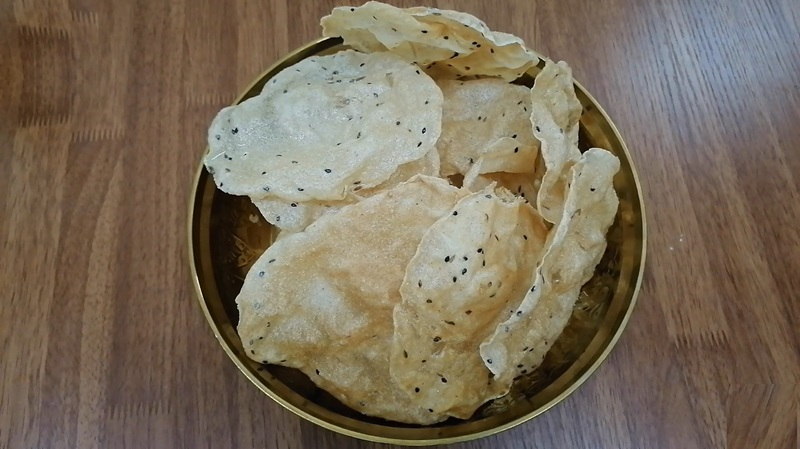
Kerala cuisine is known for its unique flavors and diverse range of dishes. One such popular dish is Kappa pappadam. Kappa is the Malayalam term for tapioca, a starchy root vegetable commonly found in Kerala. Pappadam, on the other hand, refers to a thin and crispy lentil-based flatbread. To prepare Kappa pappadam, the tapioca is boiled until tender and then mashed with spices like turmeric, chili powder, and salt. The mixture is then shaped into small balls or flattened discs. These are then deep-fried until golden and crispy. Pappadams, on the other hand, are also deep-fried until they puff up and become crispy. The combination of the soft and flavorful mashed kappa along with the crunchy pappadams creates a delightful texture contrast in every bite. Kappa pappadam is often served as a snack or appetizer, accompanied by a spicy coconut chutney or a tangy tomato sauce.
Vinyali

Kerala's culinary landscape is celebrated for its opulent flavors and distinctive spice blends, and within this gastronomic tapestry, the Vinyali stands out. Frequently misconstrued with Vindaloo, Vinyali is a piquant and zesty delicacy originating from the coastal regions of Kerala. Typically featuring meat, commonly pork or chicken, this dish incorporates a medley of traditional spices and vinegar. Aromatic ingredients such as cloves, cinnamon, and cardamom are meticulously ground to create a flavorful paste, infusing the meat with a distinctive taste. Marination involves this spice paste, along with vinegar, garlic, and ginger, elevating the dish's overall flavor profile. Slow-cooked to perfection, the Vinyali Dish allows the amalgamation of spices and the tenderization of the meat. Known for its bold and tangy taste, the dish achieves balance through the addition of coconut milk and jaggery. The end result is a delectably spicy curry that pairs harmoniously with Kerala's staple rice or breads like appam and parotta. The Vinyali Dish encapsulates Kerala's culinary legacy, captivating locals and tourists alike with its bold flavors and aromatic spices.
Biryani
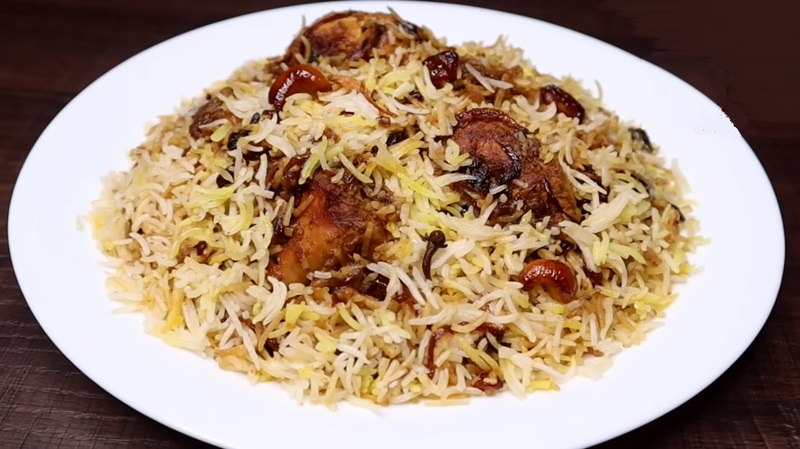
Kerala cuisine is known for its rich and diverse flavors, and one dish that truly epitomizes this is the Kerala Biryani. Biryani is a popular rice dish that originated in the Indian subcontinent and has since spread across the globe. However, each region in India has its own unique take on this beloved dish, and Kerala is no exception. Kerala Biryani is a flavorful and aromatic rice dish made with fragrant basmati rice, tender meat (usually chicken, mutton, or fish), and a blend of spices. What sets it apart from other biryanis is the use of coconut milk and a generous amount of curry leaves, giving it a distinct Kerala touch. The meat is marinated in a mixture of spices and yogurt, which is then layered with partially cooked rice and slow-cooked to perfection. The result is a biryani that is rich in flavors, with the meat tender and succulent, and the rice perfectly cooked and infused with spices. The combination of spices, coconut milk, and curry leaves gives the Kerala Biryani its unique taste, which is both spicy and subtly sweet. Kerala Biryani is often served with raita, a yogurt-based side dish, or a spicy pickle to balance the flavors. It is a dish that is enjoyed on special occasions and festivals, as well as on regular days when one wants to indulge in the rich and aromatic flavors of Kerala cuisine.
Puri
-1707803895.jpg)
Puri, a popular Indian deep-fried bread, holds a special place in Kerala cuisine. It is a delectable dish that is made from a dough consisting of wheat flour, salt, and water. The dough is then rolled into small circles and deep-fried until it puffs up, resulting in a crispy and golden-brown bread. The uniqueness of Kerala's Puri lies in its accompaniments. It is often served with a variety of side dishes, such as chickpea curry, potato masala, or coconut-based gravies like vegetable stew or avial. These accompaniments provide a burst of flavors that complement the texture and taste of the Puri. Puri is not only a popular breakfast dish but also a preferred choice for festive occasions and special gatherings in Kerala. Its versatility allows it to be enjoyed with both vegetarian and non-vegetarian curries, making it suitable for everyone's taste buds. The aroma of freshly fried Puri fills the air, enticing people to indulge in this simple yet delightful dish. Its crispy exterior accompanied by the soft and fluffy interior makes it an irresistible treat. Whether enjoyed as a standalone dish or paired with a variety of curries, Kerala's Puri is a beloved delicacy that embodies the rich flavors of the region's cuisine.
Papadam
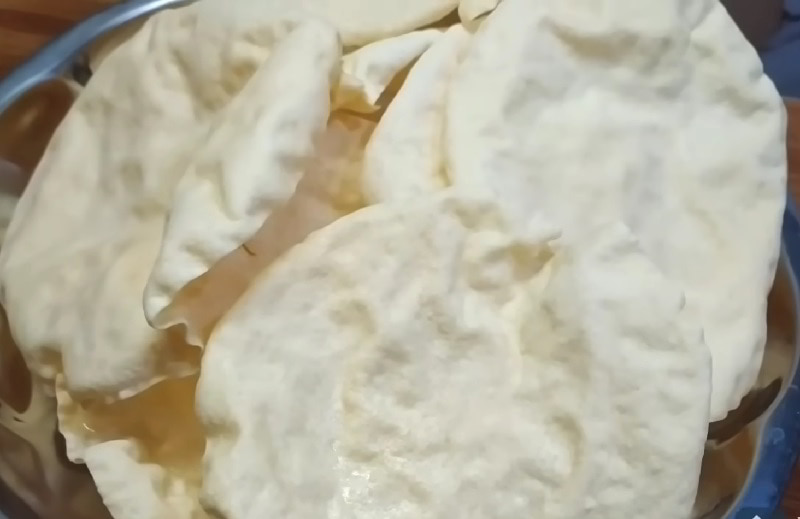
Papadam is a popular and delicious dish from Kerala cuisine. It is a thin and crispy wafer made from black gram flour, which is seasoned with various spices and then deep-fried or roasted. It is a common accompaniment to meals in Kerala and is enjoyed by people of all ages. The process of making papadams involves grinding black gram into fine flour, mixing it with spices like cumin, black pepper, and salt, and then adding water to form a dough. The dough is then rolled into thin round shapes and dried under the sun or deep-fried until it becomes crispy and golden brown. Papadams are known for their unique and addictive flavor. They have a slightly tangy and spicy taste, which is enhanced by the spices used in the dough. They are usually served as an appetizer or a side dish with meals and are often enjoyed with chutneys or pickles. Papadams are not only delicious but also a good source of protein and fiber. They are low in calories and can be a healthy alternative to other fried snacks. In addition to being a popular dish in Kerala, they are also enjoyed in other parts of India and even internationally. Overall, papadam is a must-try dish from Kerala cuisine. Its crispy texture, flavorful spices, and versatility make it a perfect addition to any meal or snack time.
Chapati
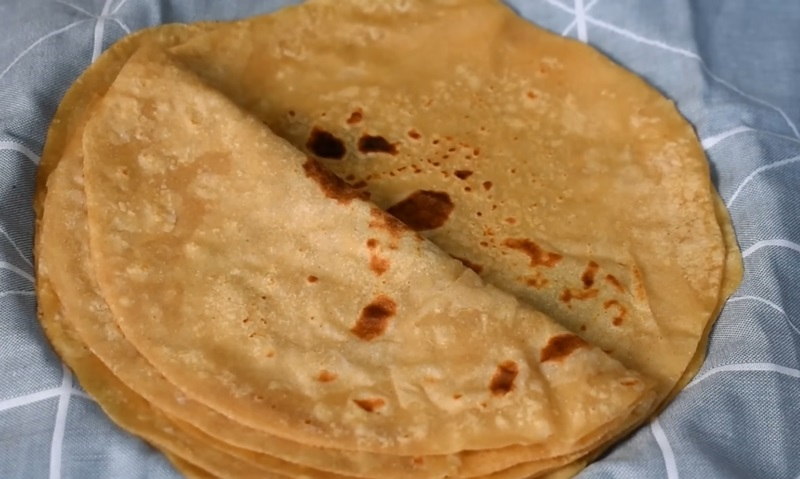
Chapati, a cherished and time-honored dish in Kerala cuisine, stands out as a flatbread crafted from whole wheat flour, water, and a touch of salt. The dough undergoes meticulous kneading to achieve a soft, smooth consistency before being shaped into thin, circular discs. Cooked on a hot griddle or tawa, these discs puff up, acquiring a delightful golden brown hue. The versatility of chapati shines through as it pairs seamlessly with an array of accompaniments, including both vegetarian and non-vegetarian curries, establishing its status as a household staple in Kerala. The tender and airy texture of chapati forms a harmonious alliance with the rich and flavorful curries it complements. Its straightforward preparation renders it a preferred choice for everyday meals, doubling as a healthier alternative to rice with its low-calorie and high-fiber attributes. Furthermore, chapati's ease of preparation makes it ideal for large gatherings or special occasions when mass quantities are needed. In summary, chapati is not merely a delectable and nutritious dish but an integral component of Kerala cuisine, cherished by locals and visitors alike for its adaptability, simplicity, and health-conscious appeal.
Raita
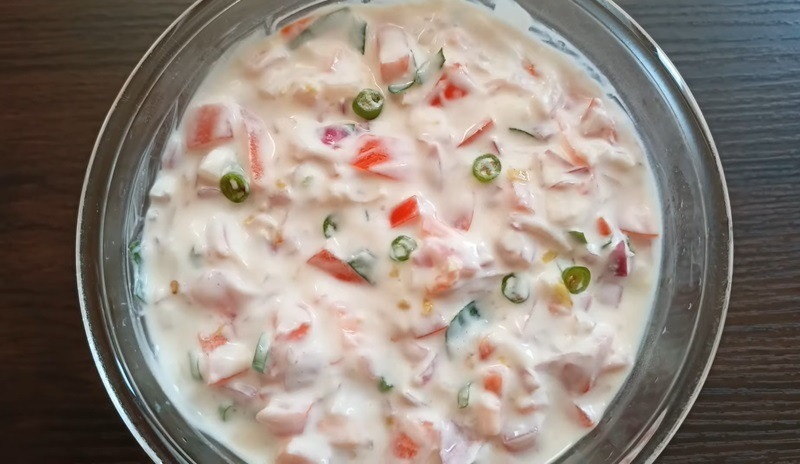
Raita is a popular dish in Kerala cuisine, which is known for its rich flavors and use of fresh ingredients. Raita is a side dish that is typically made with yogurt and various vegetables or fruits. It is served as a refreshing accompaniment to spicy curries or biryanis. In Kerala, raita takes on a unique twist with the addition of local ingredients and spices. One of the most common variations is the coconut raita, where grated coconut is mixed with yogurt and tempered with mustard seeds, curry leaves, and green chilies. This gives the raita a distinct Kerala flavor. Another popular raita in Kerala is the pineapple raita. Diced pineapple is mixed with yogurt, along with a hint of black salt and roasted cumin powder, to create a sweet and tangy dish that perfectly complements the spiciness of the main course. Kerala cuisine is also known for its use of fresh vegetables, and thus, vegetable raita is a common dish. Finely chopped cucumbers, tomatoes, onions, and carrots are mixed with yogurt and seasoned with herbs like coriander and mint. This light and crunchy raita adds a refreshing element to any meal. Overall, Kerala cuisine raita dishes are a delightful combination of flavors and textures, making them a must-try for anyone who appreciates the diverse tastes of Indian cuisine.
Kheer
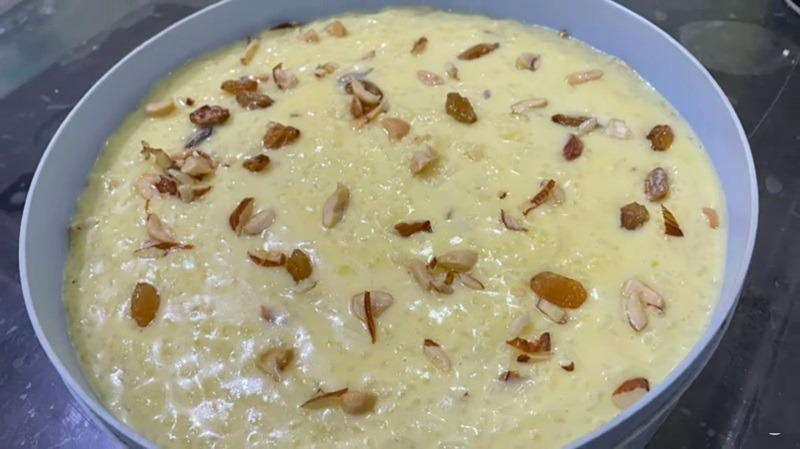
Renowned for its opulent flavors and distinctive ingredient combinations, Kerala cuisine boasts the beloved dessert known as Kheer or Payasam in the local language—a luscious rice pudding cherished by individuals of all ages. To craft this delectable treat, rice is simmered in milk and sweetened with either sugar or jaggery. Infused with the aromatic notes of cardamom and saffron, Kheer is often adorned with a medley of chopped nuts, such as almonds, cashews, and pistachios. The gradual cooking process allows the rice to absorb the milk's essence, culminating in a luxuriously thick and creamy consistency. What distinguishes Kerala's Kheer is the incorporation of coconut milk, imparting a unique richness and sweetness to the dish. This addition bestows upon the Kheer a refreshing and satisfying flavor profile. Frequently presented as a dessert during special occasions and festivals, Kheer holds a significant place in Kerala's culinary traditions. Its role extends beyond mere indulgence; Kheer is a revered offering in temples, symbolizing a sacred and celebratory aspect of Kerala cuisine. With its creamy allure and aromatic charm, Kheer not only delights the palate but also stands as a poignant symbol of love and festivity in the culinary tapestry of Kerala.






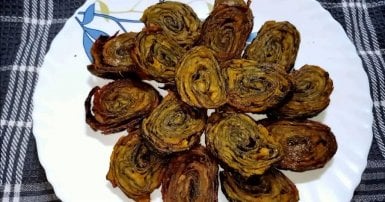
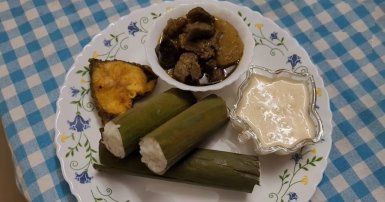
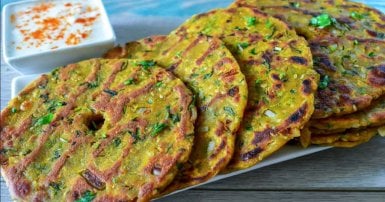
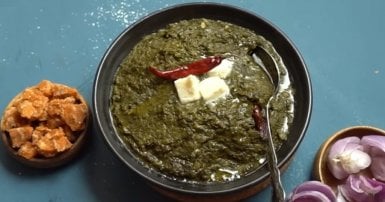
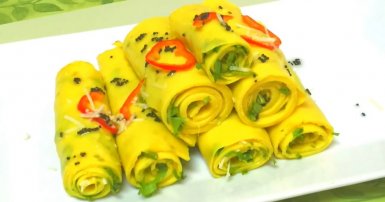
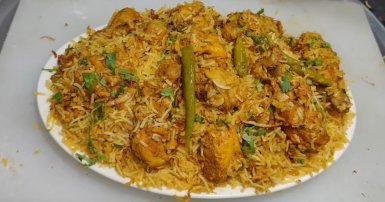

-1709813013.jpg)


